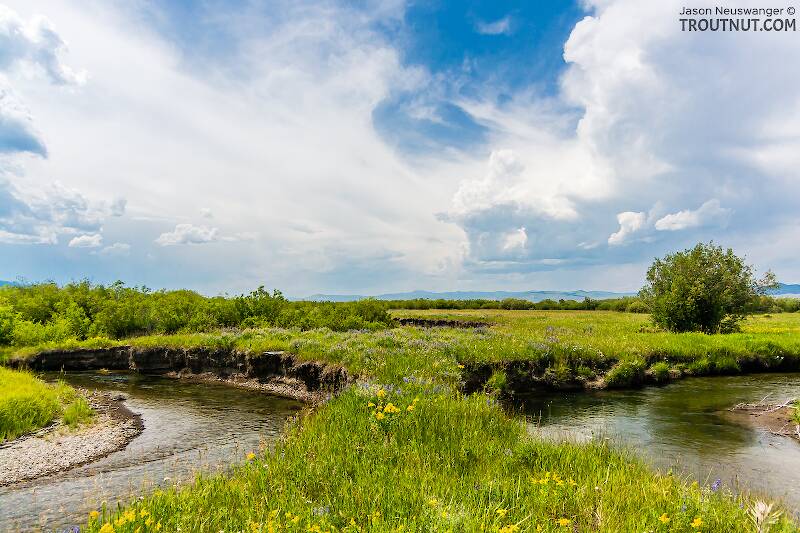
Salmonflies
Pteronarcys californica
The giant Salmonflies of the Western mountains are legendary for their proclivity to elicit consistent dry-fly action and ferocious strikes.


Mayfly Species Pentagenia robusta (Robust Burrowing Mayflies)
Species Range
Physical description
Most physical descriptions on Troutnut are direct or slightly edited quotes from the original scientific sources describing or updating the species, although there may be errors in copying them to this website. Such descriptions aren't always definitive, because species often turn out to be more variable than the original describers observed. In some cases, only a single specimen was described! However, they are useful starting points.
Male Spinner
Wing length: 14.5–15.5 mm
Eyes slightly larger than in Pentagenia vittigera; thorax and broad dorsal abdominal stripe deeper, shinier blackish brown; broken brown lateral lines on abdominal sternites.
Eyes larger than in Pentagenia vitteriga general appearance more robust. Thoracic notum deep shiny blackish brown; only a narrow lateral yellow margin on prothorax. Pleura tinged with brown, sternum largely brown. Fore tibia and tarsus light brown, darker at joints. No traces of black dots on the fore wing; both longitudinal and cross veins distinctly pale brown. The broad dorsal band on the abdominal tergites is deep shiny black-brown. The abdominal sternites are marked with broken, brown lateral lines, as in Ephemera; sternites 8 and 9 with considerable brown shading. Tails distinctly brown, joinings narrowly pale; forceps tinged with brown. In other respects, similar to vittigera.
This species differs from Pentagenia vittigera as indicated above; the main differences being the lack of black spots in forewing and the pale brown venation; deeper and shinier color of thorax and abdominal dorsum; dark lateral streaks on sternites; tails darker.
Start a Discussion of Pentagenia robusta
References
- Jacobus, L. M., Wiersema, N.A., and Webb, J.M. 2014. Identification of Far Northern and Western North American Mayfly Larvae (Insecta: Ephemeroptera), North of Mexico; Version 2. Joint Aquatic Science meeting, Portland, OR. Unpublished workshop manual. 1-176.
- Merritt R.W., Cummins, K.W., and Berg, M.B. 2019. An Introduction to the Aquatic Insects of North America (Fifth Edition). Kendall/Hunt Publishing Company.
- Needham, James G., Jay R. Traver, and Yin-Chi Hsu. 1935. The Biology of Mayflies. Comstock Publishing Company, Inc.
Mayfly Species Pentagenia robusta (Robust Burrowing Mayflies)
Species Range
Common Name
Resources
- NatureServe
- Integrated Taxonomic Information System
- Global Biodiversity Information Facility
- Described by McDunnough (1926)

